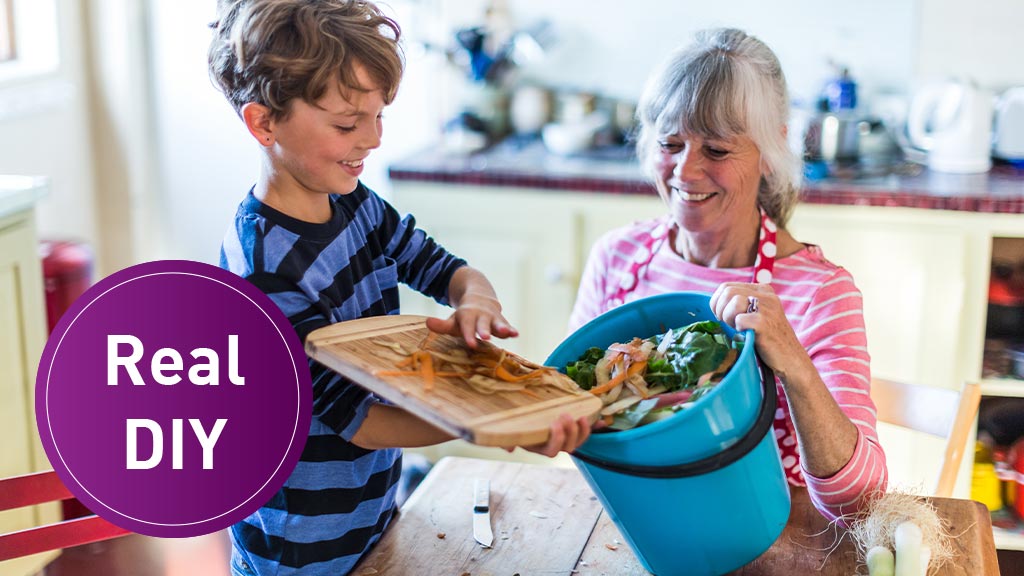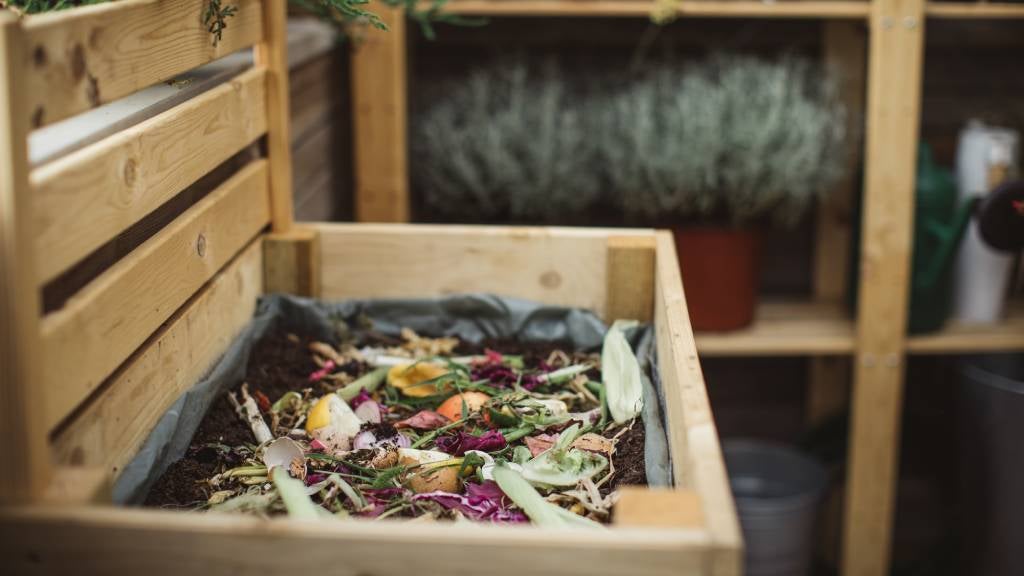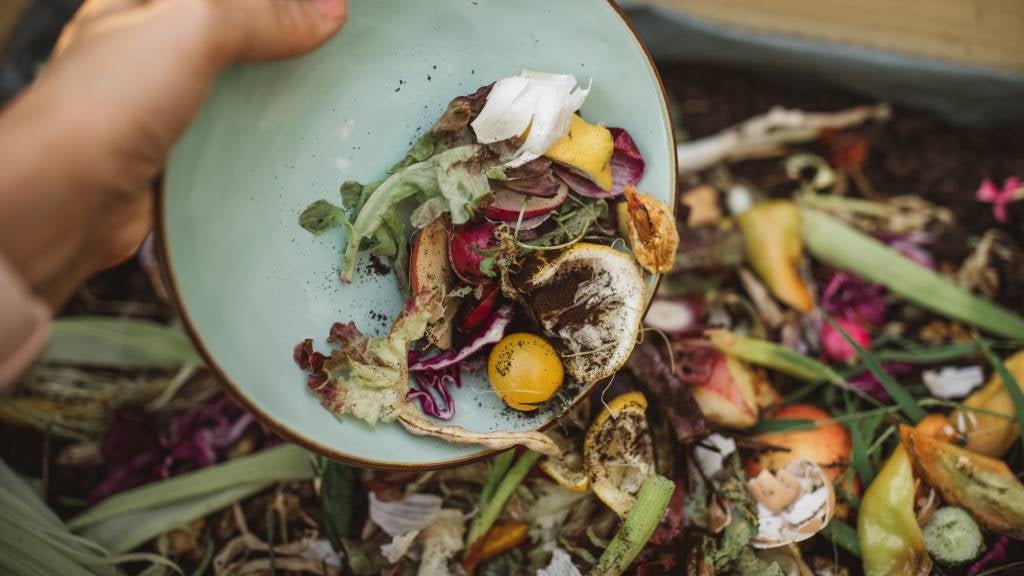Real DIY: How to compost and minimise waste at home

Want to start composting to help the environment? You’ve come to the right place! From something as small as using compostable bin liners or a kitchen compost bin right up to making your own DIY compost bins outside, here’s how to reduce waste at home.
What is compost?
Compost is a combination of lots of different ‘ingredients’ – such as food scraps, plants, green waste and other recyclable organic materials – that break down over time and become extremely rich in plant nutrients. The addition of worms helps the compost break down faster while providing a natural home for them as well.
By composting in your own backyard, you can build a compost bin full of excess green waste that can be added to soil around your garden to help your plants grow. It’s an easy way to better the environment while also saving money on expensive fertiliser for your plants.
How to make a compost bin in 4 easy steps
There are lots of compost bin DIY ideas out there, but don’t get overwhelmed by all the information when you start googling. Building a compost bin isn’t as hard as something like building a cubby house – learning how to compost is actually quite simple. In fact, there are only four steps to it:
Step #1: Pick the perfect spot

You want somewhere outside that is dry and gets plenty of shade, but is also easily accessible for your garden hose. You could get a dedicated compost bin from your local hardware store, or you might like to build one out of wood and/or chicken mesh. Using a large, sturdy plastic tub is another option, or you can even compost directly onto the ground if you have plenty of space.
Step #2: Start adding green materials

Now it’s time to start building up your pile of compost! You’ll want to get a ratio of four parts brown waste (things like leaves, woodchips and shredded newspaper) to one part green waste (things like food scraps, weeds and grass clippings). Then start layering the brown and green waste to be a few inches thick, while spraying them with water as you build your ‘compost tower’.
Step #3: Mix and water often

Whenever your compost looks a little dry, get the hose out and water it down. Also make sure to mix the compost regularly – the more you mix, the faster it will decompose.
Step #4: Cover it up

Some “pre-made” compost bins may come with a lid as pictured, but if you are building a DIY one, just use a tarp or large piece of old carpet to cover your compost bin. Not only will this reduce the smell, but it will also trap heat and help the compost break down faster.
Other ideas for composting at home
If building a DIY compost bin at home isn’t your thing but you still want to do your bit for the environment, there are lots of little changes you can make to your everyday life.
Why not invest in a small kitchen compost bin? It can live on your kitchen bench and collect all the food scraps that build up when you cook meals – instead of sitting in your regular bin and ending up in landfill. There are also plenty of alternative products available in your local supermarket. From compostable bin liners to baking paper that will break down in a compost bin, simply switching up your purchases to more eco-friendly options can make a big difference.
Composting at home helps the environment
We hope these tips for composting help make your home a more environmentally friendly place – and end up saving you money over the long term!
Looking after your home is just as important as looking after the environment, so make sure you have the right home insurance. If you’re unsure what home insurance is about, wish to get a quote or want to know how to make a claim, you can speak to Real Insurance today, call us on 1300 620 269.
21 Jun 2022